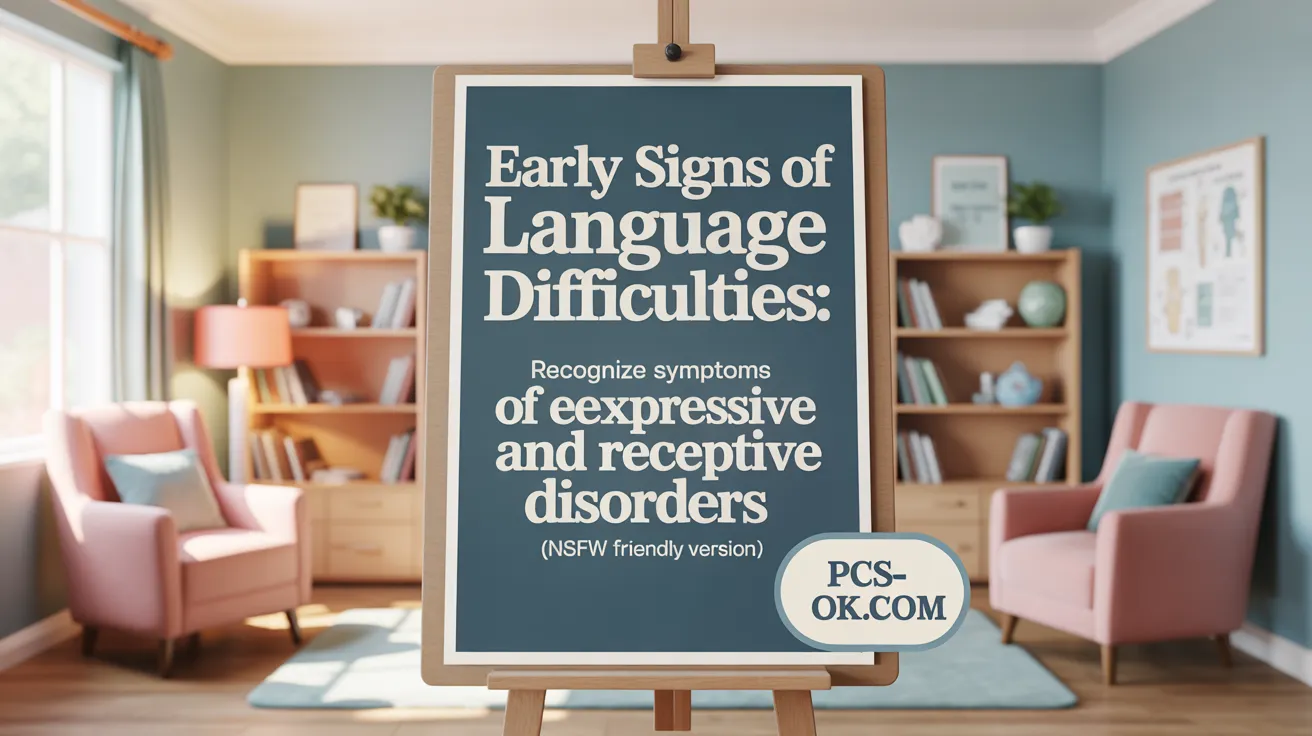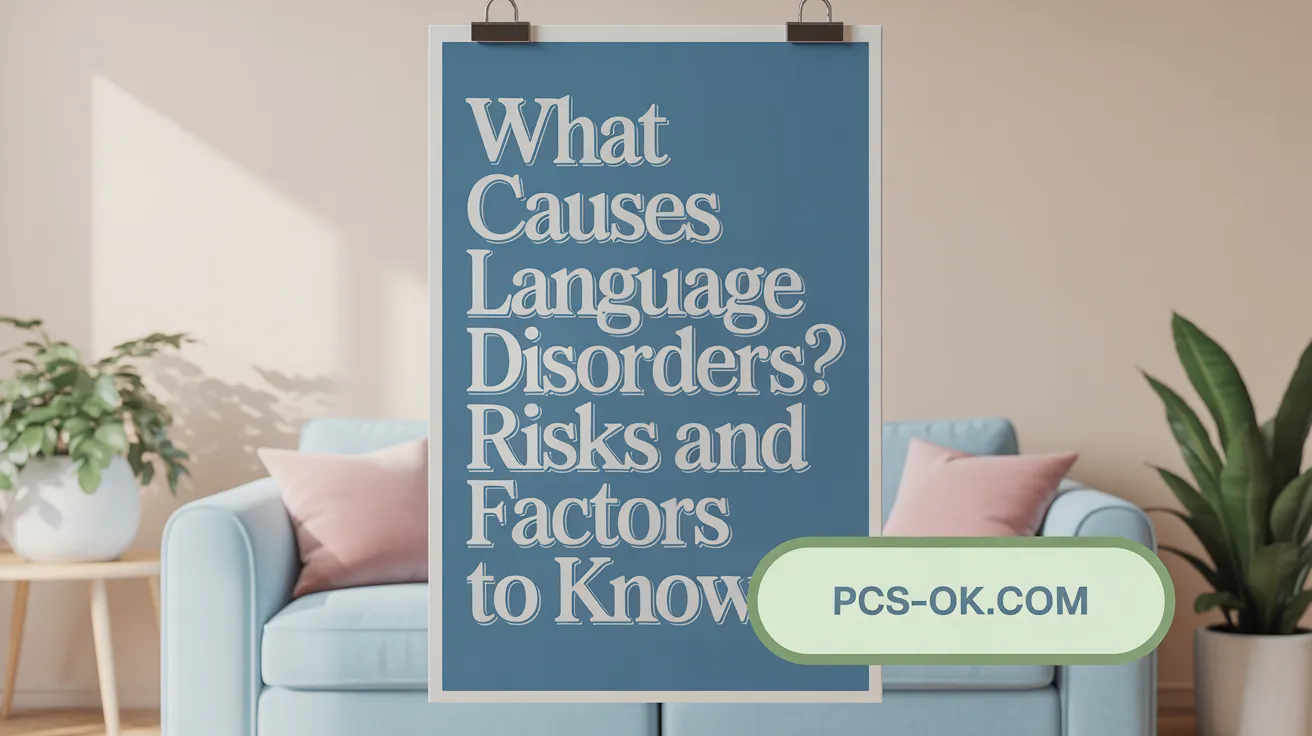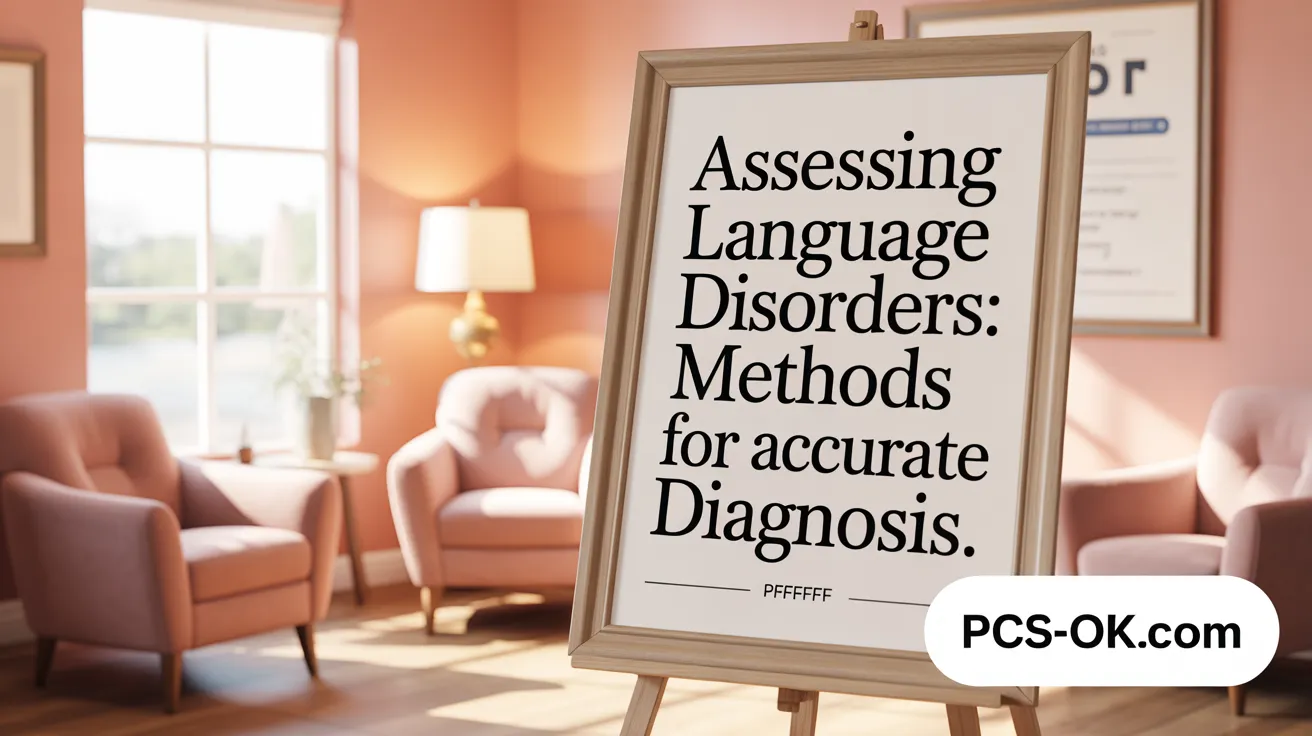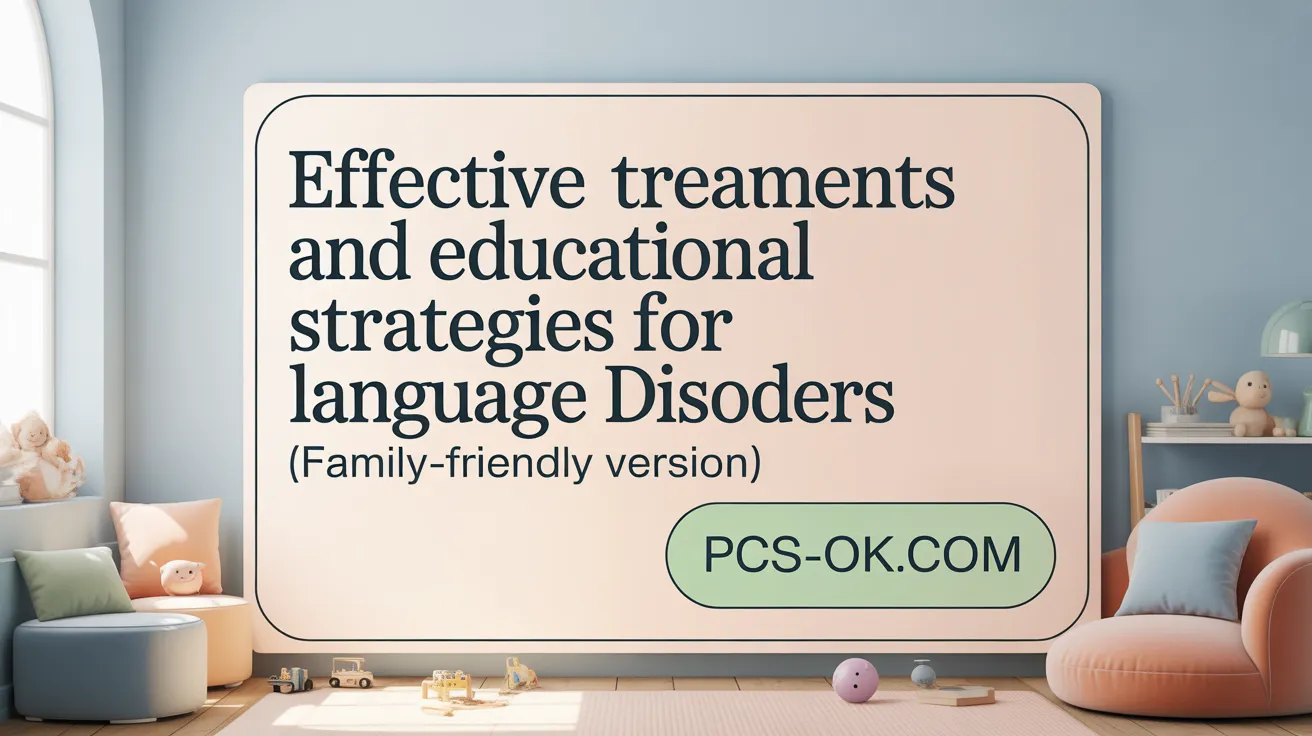Expressive vs. Receptive Language Disorders Explained
Unlocking Language Disorders: Breaking Down Expressive and Receptive Types
Language disorders present unique challenges to children and adults, making everyday communication and learning difficult. This article explores the distinctions between expressive and receptive language disorders, symptoms, causes, diagnosis methods, treatments, and the broader developmental and educational impacts. Understanding these disorders is vital for early identification and effective intervention.
Defining Expressive and Receptive Language Disorders

What are expressive and receptive language disorders?
Expressive language disorder involves difficulty in conveying thoughts, ideas, and feelings through speech or writing. Children with this condition often have a limited vocabulary, form short sentences, and make grammatical mistakes. They might understand language well but find it hard to put their thoughts into words, which can hinder their ability to communicate effectively.
Receptive language disorder, however, affects how a person understands and processes spoken or written language. Kids with this challenge might struggle to follow directions, answer questions, or make sense of stories and instructions. They may seem unresponsive or confused because they have trouble grasping incoming information.
Both disorders can impact social skills, learning, and everyday activities. Some children experience symptoms of both, known as mixed receptive-expressive language disorder.
Core features of each condition
The main features of expressive language disorder include difficulty in using words correctly, constructing sentences, and understanding grammar rules. Children may also omit words or substitute placeholders, leading to incomplete or unclear speech.
Receptive language disorder primarily involves troubles with understanding language cues, such as comprehension of vocabulary, sentence structure, or the intent behind spoken words. These children often have trouble following multi-step directions and understanding complex sentences.
Differentiating receptive and expressive difficulties
Understanding the distinction is essential for diagnosis and treatment. Children with expressive difficulties may still comprehend well but can’t express themselves clearly. Conversely, those with receptive difficulties understand others but cannot communicate their needs effectively.
However, some children experience challenges in both areas, making it a mixed disorder. These cases require comprehensive assessment to address all aspects.
Overview of mixed receptive-expressive language disorder
When children have symptoms of both receptive and expressive difficulties, they are diagnosed with a mixed receptive-expressive language disorder. These children display limited vocabularies, short sentences, and difficulty understanding language in social and academic settings.
Such cases often benefit from tailored therapies that focus on both understanding language and improving expressive skills, involving family participation and targeted interventions.
| Disorder Type | Core Challenges | Typical Signs | Assessment Methods |
|---|---|---|---|
| Expressive | Difficulty in speech production and sentence formation | Short sentences, grammar errors, limited vocabulary | Language sampling, parent interviews |
| Receptive | Difficulty understanding and processing spoken or written language | Not following directions, answering questions incorrectly | Developmental milestones, hearing tests |
| Mixed | Combination of both challenges | Limited vocabulary, poor comprehension, short sentences | Comprehensive speech-language evaluation |
Understanding the differences between these disorders helps in creating effective treatment plans aimed at improving communication and overall development.
Recognizing Symptoms and Signs: Expressive vs. Receptive Language Disorders

What are the symptoms and signs of expressive versus receptive language disorders?
Understanding the differences between expressive and receptive language difficulties is essential for early detection and effective intervention. Children with expressive language disorder often exhibit a limited vocabulary and find it challenging to form complete sentences. They may struggle to find the right words, leave words out, or use incorrect tense, which can result in speech that sounds simplified or hesitant. These children might also convey their thoughts through gestures or facial expressions when words become too difficult.
On the other hand, receptive language disorder primarily affects understanding. Children with this condition have trouble grasping spoken or written language. They may find it difficult to follow directions, answer questions appropriately, or understand jokes, sarcasm, or complex sentences. During communication, they might respond in an inappropriate manner or seem confused, indicating they did not comprehend the message fully.
Behaviorally, children with receptive issues might seem disengaged or distracted, often not responding to their name or needing repeated instructions. Those with expressive challenges may appear frustrated because they know what they want to say but can’t express it clearly. This often leads to reduced participation in conversations, difficulty in social settings, and struggles with academic tasks involving language.
Both types of difficulties can impact social interactions and learning, but they involve different parts of the language process. Early assessments conducted by speech-language pathologists help identify whether a child struggles more with understanding or with expressive skills, guiding tailored intervention plans.
How do these disorders influence communication and learning?
Children with language disorders may exhibit signs such as poor eye contact, limited speech development, or difficulty in retelling stories. These signs are developmentally inappropriate and warrant assessment. Recognizing red flags, like not using gestures by age 12 months or having less than 50 words by age two, can prompt timely intervention.
Ultimately, understanding these signals enables parents, teachers, and caregivers to support children effectively. Speech therapy, focusing on building vocabulary and comprehension skills or improving sentence formation and expressive capacity, can significantly enhance a child’s ability to communicate confidently and connect with others.
Causes, Risk Factors, and Underlying Influences on Language Disorders

What causes expressive and receptive language disorders, and what are their risk factors?
Language disorders in children arise from a mix of biological and environmental factors. Biological causes include genetic syndromes such as Down syndrome and fragile X syndrome, brain malformations, neurological injuries, and hearing impairments. These conditions can directly impact how the brain processes language, leading to difficulties in understanding or using language effectively.
Environmental influences also play a significant role. Limited exposure to rich language environments, especially during critical developmental periods, can hinder language acquisition. Factors such as low parental education, socioeconomic challenges, and inadequate stimulation at home impact language growth. Prenatal factors, including poor maternal nutrition, substance exposure (like alcohol or drugs), and insufficient folate levels during pregnancy, can increase the risk of language delays.
Preterm birth and craniofacial anomalies are additional risk factors that can interfere with normal speech and language development. These children may experience delays in both receptive and expressive skills due to neurological immaturity or physical barriers.
Developmental delays and family history are important indicators. A family history of language or learning issues suggests a genetic predisposition, increasing the likelihood of similar problems in children. Children with certain medical conditions such as cerebral palsy, epilepsy, or traumatic brain injuries also face higher risk.
Psychosocial factors—including the quality of parent-child interactions, the frequency of joint attention episodes, and facial engagement—are crucial. Children who do not receive adequate interactive language experiences may develop delays or disorders.
In summary, the causes and risk factors for language disorders are multifaceted, involving both genetic predispositions and environmental exposures. These influences often interact, with biological vulnerabilities compounded by external factors, leading to challenges in both understanding (receptive) and producing (expressive) language.
Diagnosis and Assessment Methods for Language Disorders

How are expressive and receptive language disorders diagnosed and assessed?
Diagnosing and assessing both expressive and receptive language disorders requires a thorough, multi-faceted approach conducted predominantly by speech-language pathologists (SLPs). The process begins with collecting a detailed background, including developmental history, medical records, and observations from parents or caregivers. This helps identify any early signs of language difficulties and associated conditions.
SLPs typically perform formal evaluations using standardized assessments. These tests are designed to measure specific language skills across five main areas: phonology (sound system), morphology (word forms), syntax (sentence structure), semantics (meaning), and pragmatics (social use of language). These norm-referenced tests compare the child’s performance with that of same-age peers, offering insights into the severity and scope of the disorder.
In addition to standardized tests, informal assessments such as dynamic testing, observational analysis, and language sampling provide valuable information about how a child uses language in natural settings. Dynamic assessments involve teaching new language skills during testing to evaluate learning potential.
Furthermore, the assessment process includes hearing screenings to rule out hearing loss, which can mimic language disorders. Oral mechanism exams evaluate the physical structures involved in speech production, like the tongue, lips, and palate.
To distinguish language disorders from other cognitive or developmental issues, evaluations of cognitive function and literacy skills are conducted. These may include IQ tests and assessments of academic skills.
Early diagnosis is essential for effective intervention, and culturally responsive assessment practices are vital to accurately evaluate children from diverse linguistic and cultural backgrounds. Ongoing monitoring through repeated assessments ensures that interventions remain appropriate and effective.
| Assessment Component | Purpose | Additional Details |
|---|---|---|
| Language Screening | Quick check for language difficulties | Typically performed by teachers or SLPs during routine check-ups |
| Standardized Tests | Measure language skills against norms | Examples include CELF, PPVT, and TROG |
| Language Sampling | Observe spontaneous language in natural context | Analyzing conversation or storytelling samples |
| Dynamic Assessment | Evaluate learning potential in real-time | Focus on teachability and ability to improve during testing |
| Hearing and Oral Exams | Ensure physical ability to produce and understand speech | Crucial for ruling out hearing impairments |
| Cognitive and Literacy Testing | Differentiate from other developmental concerns | Helps tailor intervention to child’s overall development |
Assessment efforts aim to build a comprehensive profile of each child’s communication strengths and challenges, guiding personalized treatment plans that consider the child’s linguistic, cultural, and functional context.
For more detailed information, search for “diagnosis and assessment of expressive and receptive language disorders.” Ensuring early, accurate diagnosis helps optimize intervention outcomes and supports successful communication development.
Treatment, Interventions, and Educational Implications

What treatment approaches and interventions are effective for expressive and receptive language disorders?
Effective strategies to support children with language disorders involve customized speech therapy programs tailored to each child’s unique needs. Speech-language pathologists employ various techniques, such as play-based activities, structured exercises, multisensory approaches, and real-world interactions, to help improve understanding and communication skills.
Early intervention is vital. Therapies often include picture-based activities, modeling language use, and training caregivers to reinforce skills at home. For receptive language, therapy focuses on building vocabulary and comprehension through activities like picture naming and interactive stories.
For expressive language, the aim is to enhance vocabulary, sentence complexity, storytelling, and descriptive language through retelling stories and encouraging verbal expression. Modern approaches also incorporate caregiver involvement, teletherapy options, and culturally responsive strategies, which have shown positive outcomes in promoting speech and language development.
What are the educational and developmental implications of expressive and receptive language disorders?
Language disorders can greatly influence a child’s educational and personal growth. Difficulties understanding or expressing language may lead to problems with reading, writing, social skills, and overall learning. Such children might struggle to participate in classroom discussions, follow instructions, and grasp new concepts, which can hinder their academic success.
Emotionally and socially, these challenges might cause frustration, low self-esteem, or social withdrawal. Without early assessment and intervention, gaps in language skills can widen, impacting later learning and social interactions. Speech therapy that is early, targeted, and culturally appropriate can help improve communication, support academic achievement, and foster healthier social relationships.
How do expressive and receptive language disorders affect communication and learning?
These disorders can deeply impact how individuals communicate and learn. Receptive language difficulties make it hard to understand spoken and written language, affecting comprehension, following instructions, and engaging with stories or lessons. This can result in poor academic performance and limited participation.
Expressive language challenges limit a person’s ability to formulate sentences, use correct grammar, and express ideas clearly. This impairs participation in classroom activities, storytelling, and social interactions. Both types of disorders can lead to emotional issues like frustration or social isolation. Early diagnosis and dedicated therapy are essential to improve communication skills, support learning, and foster positive social experiences.
| Aspect | Receptive Language Disorder | Expressive Language Disorder | Impact on Development | Intervention Focus |
|---|---|---|---|---|
| Definition | Difficulties understanding spoken or written language | Difficulties using words and sentences to communicate | Can hinder social and academic growth | Building vocabulary, understanding functions, practicing comprehension |
| Common Challenges | Following directions, answering questions, grasping concepts | Vocabulary, sentence structure, storytelling | May cause social withdrawal, low confidence | Expanding expressive vocabulary, sentence formation |
| Treatment | Picture-based activities, modeling, caregiver training | Story retelling, descriptive language, conversational practice | Affects literacy, reasoning, and problem-solving | Personalized speech therapy, family involvement |
| Age of Diagnosis | Typically identified between ages 3-8 | Usually diagnosed between ages 3-5 | Critical for early skill development | Early intervention to prevent long-term gaps |
Understanding and treating both receptive and expressive language disorders are crucial for supporting children’s overall development and success in school and social environments.
Moving Forward: Supporting Individuals with Expressive and Receptive Language Disorders
Expressive and receptive language disorders each pose specific challenges that impact communication, learning, and social development. Recognizing their distinct symptoms, understanding underlying causes, and ensuring early, accurate diagnosis are key steps toward effective intervention. Individualized therapy approaches supported by active parental and educational involvement have proven invaluable in improving language abilities and enhancing quality of life. Raising awareness and fostering informed communities can ensure that children and adults with these disorders receive the support they need to thrive both academically and socially.
References
- Expressive vs. Receptive Language
- Receptive and Expressive Language Disorders
- Language Disorders
- The Difference Between Receptive and Expressive Language
- Expressive and Receptive Language
- Language Disorders in Children
- Receptive and Expressive Language Disorders
- Receptive Language & Expressive Language Disorder Facts
- Language Disorders in Children | Types, Causes & …
